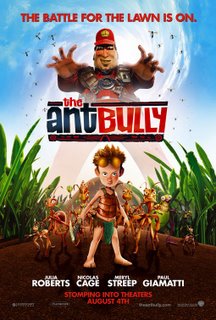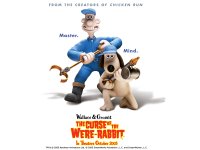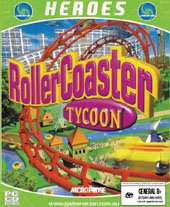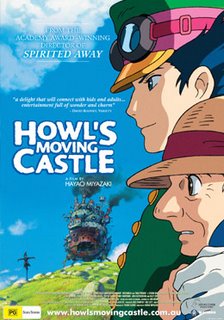 This is a story I wrote last week after reading a book on Mummies and Ancient Egypt…
This is a story I wrote last week after reading a book on Mummies and Ancient Egypt…
Hello, I am an Embalmer. I help make corpse’s last a long time. How do I do it? First we put the body face up on an embalming table. Then we take out the soft organs that encourage bacteria. Then we carefully pull the brain out of the nostrils with an embalming hook, making sure not to do anything to the persons face. Then the chief embalmer cuts a hole in the left side of the person’s stomach then we take all the organs out except the heart. The heart is an important part of the mummification. Then we wash the body thoroughly in palm wine. When the body starts to stink, we fill the body with sweet smelling spices mixed with natron (a type of salt) and leave the body for 40 days. After the 40 days are up, we remove the natron and we fill the body with linen and rub the body with more sweet smelling spices mixed with wax and oil. Then we pour a sticky resin all over it. After that we apply makeup, and jewellery if the person was rich. Then we wrap the body up in linen, with the more expensive linen on the outside. We’re done! I hope you enjoyed the little tour of making mummies!
Bye!
Original story by Hope Read
Tuesday, October 17, 2006
Mummies
Embalming
From Wikipedia, the free encyclopedia
Embalming, in most modern cultures, is the art and science of temporarily preserving human remains to forestall decomposition and make it suitable for display at a funeral. The three goals of embalming are thus preservation, sanitization and presentation (or restoration) of a dead body to achieve this effect. Embalming has a very long and cross-cultural history, with many cultures giving the embalming processes a great religious meaning. Embalming is not usually required in several countries, including the United States of America, although embalming have a closed casket funeral if the deceased was killed by a disease.
History of embalming
Embalming has been practiced in many cultures and is one of the earliest surgical procedures humanity undertook. In classical antiquity, perhaps the Old World culture that had developed embalming to the greatest extent was that of ancient Egypt, who developed the process of mummification. They believed that preservation of the mummy empowered the soul after death, which would return to the preserved corpse.
Other cultures that had developed embalming processes include the Incas and other cultures of Peru, whose climate also favoured a form of mummification.
Saturday, September 30, 2006
Movie Review | The Ant Bully
 Thanks to Scott Kelso and Filmguide for giving us the tickets to see the preview screening of The Ant Bully!
Thanks to Scott Kelso and Filmguide for giving us the tickets to see the preview screening of The Ant Bully!
The Ant Bully is about a boy called Lucas who has bullying problems. He has just moved into a new neighbourhood and the local bully has decided he is going to be his new target.
Lucas is unhappy and he releases his anger and frustration at having no friends, on the ants, only to find that the ants have the ability to retaliate. He learns a valuable lesson from the ants about working as a team and reaches his goal to make new friends through the things the ants have taught him.
I thought that this movie was cool because we sometimes forget that ants are living creatures and have feelings like us (even if they are pests!) and that if ants can work in a team together, then we can too. It also teaches us invaluable lessons in how to deal with bullying. So I give this film the big thumbs up!
I would recommend this movie for 4 to 14 year olds.
Tuesday, August 29, 2006
Well a blog, but an unusual one.

Well shame on me. I couldn’t find anything else to blog about apart from my birthday.
Well what ‘cha going to do, boo me down and banish me from blogging? I didn’t think so. Well down to the business of my birthday. I got a FIFFTY dollar-shopping spree (no not fifty cents), Five Dollars, Ect. I tell you I diddent get as much presents as Aimee is going to get. So if you are felling kind this Sunday (to cession) you could get me a present, but that isn’t going to happen unless somebody is felling REALLY kind. Okay, I must be boring you. Ill gets down to the business of me semi-screaming. I got my ears pierced…. You are thinking im a complete wimp aren’t you? Well you would be if you had a sister who had high functioning autism saying I cant wait till she screams, and she’s going to scream, and a lady who was there made you the centre of attention. Face it, you would fell on edge. I had a good birthday though.
Hope
Wednesday, August 02, 2006
Wallace & Gromit the curse of the Were-Rabbit
 Here is a dvd review that I wrote recently:
Here is a dvd review that I wrote recently:
The people of the neighbourhood of West Wallaby are getting ready for the vegetable competition that is held every year at Tottington Hall. All of the people's vegies are getting looked after by Anti-Pesto, Wallace's new invention. But it seems that even with Anti-Pesto looking after their vegetables, that there is not going to be a vegetable competition after all, on the account of a HUGE Were-Rabbit that Anti-Pesto just can't catch. Victor Quartermaine, who wants to impress Lady Tottington, to get her hand in marriage (and her fortune), so takes this as an chance to impress her more by killing the were-rabbit. Soon Lady Tottington has to consent, not knowing the consequences there might be.
This is a great movie and I would recommend it for 4 - 10 year olds.
Wednesday, July 05, 2006
Science Experiment 001: Grow a Stalactite
 Stalactites are long rock columns that grow from the roof of a cave and hang down. Stalagmites look the same as Stalactites, but grow from the floor of a cave and grow upward. When they meet, they form a column. They are made from deposits of mineral calcium carbonate in water that drips into the cave.
Stalactites are long rock columns that grow from the roof of a cave and hang down. Stalagmites look the same as Stalactites, but grow from the floor of a cave and grow upward. When they meet, they form a column. They are made from deposits of mineral calcium carbonate in water that drips into the cave.
To remember the difference between the two, think about this: Stalactites hold tight (tite) to the roof of the cave, and stalagmites might (mite) reach the roof.
What we needed:
2 glass jars, baking soda, spoon, string, pegs, water, and a saucer.
What we did:
1. First we filled the two jars with HOT water.
2 & 3. then we put baking soda in the jars, and mixed it until it dissolved.
4. then we put the string with the pegs TIED on to it in the jars.
5. after that we put a saucer between the jars to catch the drips.
6. Then we left it for 2 weeks In a few months our stalagmite and stalactite will join to make a column.
In a few months our stalagmite and stalactite will join to make a column.
My mum found out that it was good paint remover too!
My rating on this experiment:
I loved it!!!!!!!!
You can find lots of other cool things in caves, like cave pearls and cave straws.
Monday, June 19, 2006
The Adventures of Tintin - DVD review
 Tintin travels the world, usually accompanied by his little dog, Snowy. Maybe it’s because of his very keen reporters instincts, but somehow he always gets into some sticky situation that needs to be solved, everywhere he goes.
Tintin travels the world, usually accompanied by his little dog, Snowy. Maybe it’s because of his very keen reporters instincts, but somehow he always gets into some sticky situation that needs to be solved, everywhere he goes.
In the first disk of The Adventures of Tintin we get to see him battling gangsters in Chicago (Tintin in America), learning the truth behind a supposed ‘curse’ in Egypt (Cigars of the Pharaoh), uncovering some dodgy political plots in China (The Blue Lotus), and heading to South America to solve a mystery surrounding a small idol with a broken ear (Tintin and the broken ear). Of course everybody has a number one enemy, and Tintins one is Rastapolius, film producer and criminal. Now of course, Tintin, like most detectives, wouldn’t be anywhere if it weren’t for some help from friends. Apart from Snowy, there’s Captain Haddock, Thompson & Thompson, Professor Calculus, & Chinese orphan Chang. There’s just enough to keep you entertained, that you wont even notice that it’s a bit old fashioned. If you love Tintin, then you’ll love this series.
Did you know?
Herge’s real name is Georges Remi.
Thompson & Thompson made a cameo appearance in the Asterix comic, Asterix in Belgium.
The very first Tintin book was Tintin in the Congo.
Tuesday, May 30, 2006
child slavery
Here is some shocking information that I have found out about child slavery (labour). Children as young as 5 [ :o ] are involved!
There is an estimated 246 million children engaged in child labour in the world. Of those children, almost 171 million work in hazardous situations or conditions, such as working in mines, working with chemicals and pesticides in agriculture or working with dangerous machinery. They are everywhere but invisible, toiling as domestic servants in homes, labouring behind the walls of workshops, and hidden from view in plantations.
Millions of girls work as domestic servants and unpaid household help and are especially vulnerable to exploitation and abuse. Millions of others work under horrific circumstances. 1.2 million may be trafficked, 5.7 million forced into debt bondage or other forms of slavery, 1.8 million into prostitution and pornography, 0.3 million into participating in armed conflict and 0.6 million are participating in other illicit activities. However, the vast majority of child labourers (70 per cent or more) work in agriculture.
 A girl working in the reconstruction effort carries a tile on her head in the city of Choluteca, Honduras.
A girl working in the reconstruction effort carries a tile on her head in the city of Choluteca, Honduras. * The Asian and Pacific regions harbour the largest number of child workers in the 5 to 14 age group, 127.3 million in total. (19 per cent of children work in the region.)
* Sub-Saharan Africa has an estimated 48 million child workers. Almost one child in three below the age of fifteen works.
* Latin America and the Caribbean have approximately 17.4 million child workers. In fact, 16 per cent of children work in the region.
* Fifteen per cent of children work in the Middle East and North Africa.
* Approximately 2.5 million children are working in industrialized and transition economies.
I was blessed (lucky) to be born in New Zealand (a developed country), where child labour doesn’t exist, would somebody please tell this to my parents though. ;)
Friday, May 19, 2006
World Vison – Walk The World

* Collect donations prior to the event and put them in the donation buckets on the day.
* Email/text this URL "rampant.co.nz/walktheworld" to your friends, family, workmates and ask them to donate online by credit card.
* Collect cheques payable to World Vision New Zealand and put them in the plastic buckets on the day or post to:
Walk the World
World Vision
Private Bag 92078
Auckland
Hope
Friday, May 12, 2006
another fair trade post :) - a just world
Fair Trade Chocolate
Ask a person about their favourite sweet thing to eat, and they’ll probably say its chocolate.
People all around the world love chocolate.
They love it so much that EVERY year they eat more chocolate than any other sweet.
But this is bad news for the people that produce the cacao beans (cocoa beans). Every year major chocolate companies like Cadburys and Nestlé get cacao beans at cheap prices. This leaves the farmers with almost no money whatsoever for their production and to provide for their families. But there is a way out of poverty for the cacao farmers. That way out is through fairer trade practises.
Most chocolate is full of guilt, about mine (and yours!) continued oppression of the third world. You should make every purchase thinking about what you would buy if the labels told you how much the person suffered to make it and stuff like that. If we think about purchasing things in a fair way, I’m sure more people would be rushing toward fair trade products and organic produce.
Fair trade on Close Up!
On Monday night, I watched a section on Close Up about fair trade chocolate and coffee etc. I learned the following:-
With fair trade the people get $600 from their cocoa beans, but people who didn’t get paid fair prices get $44 - $158 per year.
In England Co-op had a 20% increase in sales when they swapped their name-brand coffee, tea and chocolate products entirely to fair trade products.
4% of starbucks coffee is fair trade, and Esquires is totally (100%) fair trade.
Fair trade is guilt free shopping. We need to put more thought into what we are buying.
Fair Trade is the trading alternative for a just world.
Hope
enjoy a fair cuppa
 You can enjoy fair trade coffee or tea this weekend. Take a look at the website linked in the picture above. Pop down to your local tradeaid shop for a free Fair Cuppa!
You can enjoy fair trade coffee or tea this weekend. Take a look at the website linked in the picture above. Pop down to your local tradeaid shop for a free Fair Cuppa!
Personally, I don't drink coffee and tea, but if I did I would drink only Fair Trade. :)
read family home school **NEW BLOG**
My mum has started a new blog so that we can showcase some of the things we have done in our home schooling. At the moment there is only one post - a story written by my sister Briahna, aged 6, but we hope to post some of my own work there soon. :) Take a look, you can click on above picture to get to the blog...
Take a look, you can click on above picture to get to the blog...
Sunday, April 30, 2006
Mount Everest
 Mount Everest is really famous for being so so high that you have probably heard of it before. It has been known all over the world (wow!) ever since the early 1950s when Sir Edmund Hillary and Tenzig Norgay first climbed to its super summit. Hillary looked at Everest comprehensively at the time and determined that it was 29,000 ft/8840m high - a figure amazingly close to the current reading of 29,035 ft/8850m, which was confirmed using radar and global positioning satellite technology.
Mount Everest is really famous for being so so high that you have probably heard of it before. It has been known all over the world (wow!) ever since the early 1950s when Sir Edmund Hillary and Tenzig Norgay first climbed to its super summit. Hillary looked at Everest comprehensively at the time and determined that it was 29,000 ft/8840m high - a figure amazingly close to the current reading of 29,035 ft/8850m, which was confirmed using radar and global positioning satellite technology.
When Edmund Hillary and Tenzig Norgay (pictured) climbed to the top of Everest they had to wear oxygen tanks, because of the lack of air. Climber’s brains and muscles require the same amount of oxygen to perform, as they would at sea level. That is what makes it really tough to climb Everest.
Cool Stats on Everest:
The Location: Himalayan Mountains, Nepal
Stats: the top of Everest is a breathtaking 29,035 ft/8,850m above sea level.
Scientists that study this really cool stuff are called geologists.
Monday, April 10, 2006
Reasons that my Blog is cool
 1. I put cool things on it.
1. I put cool things on it.
2. It’s got cool link’s to cool blogs on it.
3. Because my post’s are cool.
4. Because it look’s cool.
5. Because it just is!!!!
If you agree with me, please comment and tell me what YOU think is cool about it, but if you do not think my blog is cool, please do not comment :).
By the way, if you want to know what are the best blogs that have links on my blog, then I would advise you to look at onscreen, Frank, and Mutant Babe.
Hope
Thursday, April 06, 2006
Easter Eggs

The chocolate used in Easter eggs, is NOT fair-trade chocolate. Therefore you are not supporting the farmers that produce the cocoa beans that make your Easter especially yummy!
Chocolate used for Easter eggs is bought cheaply, but at a huge cost to our planet. Cocoa farmers are paid less than it costs to produce the cocoa beans. They cannot afford to send their children to school or put good food on their tables (if they have any table!). All, so that our tummies can be full of delicious chocolate. In New Zealand it is difficult to imagine what their lives must be like.
Easter eggs are more expensive than a chocolate bar yet chocolate bars have MORE chocolate than Easter eggs. The chocolate companies are happier than ever to take your money and buy cocoa beans cheaply at this time of the year. The more they buy the cheaper the price, but at what cost to peoples lives?
A better alternative is to buy Fair-trade chocolate – you could even buy chocola te moulds and melt it down to make your own eggs. I am asking my parents to buy me trade aid chocolate this year instead of an easter egg.
te moulds and melt it down to make your own eggs. I am asking my parents to buy me trade aid chocolate this year instead of an easter egg.
I just found out when I looked at their website that children in West Africa MY AGE (9) have to work hard on cocoa bean plantations - is child slavery one of the ingredients in your easter egg this year?
Hope
Tuesday, April 04, 2006
Fair Trade Chocolate
 Because of Jacob's request - I have written a blog about Fair Trade.
Because of Jacob's request - I have written a blog about Fair Trade.
Fair Trade is an organization that works to get more money for the cocoa bean farmers. Many cocoa farmers go hungry because of the poor amount of money they are paid for their cocoa beans. If big companies like Cadbury used “fair-trade” cocoa beans then a lot more cocoa farmers will stop starving and be able to provide for their families. As it is, these farmers don’t even get enough money to pay for the cost of producing the beans.
One of the companies involved in fair-trade is The Body Shop. They use Cocoa Butter made from coco beans produced by farmers who are paid a fair price for their produce. The Cocoa Butter is used in their range of mosturising products. The Cocoa Beans The Body Shop buy are supplied by Kuapa Kokoo Ltd in Ghana. The town of Sefwi Asawinso have used the extra amount that is being paid for their cocoa to build a day care centre providing educational facilities for the children in their village.
Choosing to buy fair-trade products is not an act of charity – the goodness of the chocolate, is enough to make you want to buy it over other brands. I think that it is DELICIOUS! So you are getting value for money and the knowledge that the people producing the ingredients are getting a fair price for it.  Slave trade or Fair trade?
Slave trade or Fair trade?
Monday, April 03, 2006
Roller Coaster Tycoon
 I have this really cool computer game called Roller Coaster Tycoon. This is what you do when you play: you chose a scenario, then you chose a name if you want to change it, then you build ride’s and achieve your goal that is set for you. For example I have a park named Elle’s World. It’s a theme park for little kids. If you play for a while you manage to get good rides and shops. You also get a good time.
I have this really cool computer game called Roller Coaster Tycoon. This is what you do when you play: you chose a scenario, then you chose a name if you want to change it, then you build ride’s and achieve your goal that is set for you. For example I have a park named Elle’s World. It’s a theme park for little kids. If you play for a while you manage to get good rides and shops. You also get a good time.
Bye for now, Hope
Wednesday, March 29, 2006
Hope's Moving Castle
 My mum and I decided to name my blog Hope's Moving Castle because the movie we named it after is so cool!
My mum and I decided to name my blog Hope's Moving Castle because the movie we named it after is so cool!
The movie is based on Howl's Moving Castle by Diana Wynne Jones. Howl's Moving Castle follows the story of young Sophie Hatter, a bookworm, the eldest of three daughters, a girl doomed to an uninteresting life as a hat maker. Sophie resigns herself to her boring fate, but fate has other plans for her. Cursed by the Witch of the Waste with the body of a 90-year-old woman, she finds her way to the moving castle inhabited by the wizard Howl, said by all to eat the souls of young girls.
Howl has been cursed by the Witch as well, and is seeking the love of young girl to help him break the curse. The book has enchanted readers of all ages for nearly 20 years. I hope to find a copy of the book, because, like Sophie, I am a self confessed book-worm and I am also the eldest of three girls. :)



